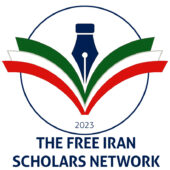Nader Rahimi
The recent news of the re-establishment of a diplomatic tie between Saudi Arabia and Iran with the help of China stunned the White House. Saudi Arabia broke off the diplomatic tie with Iran in 2016 after the Iranian protesters stormed the Saudi embassy in Iran in response to the beheading of a prominent Saudi Shia cleric. However, the Saudi’s relationship with Iran was already strained for years for a multitude of reasons, including the Iran-Iraq war, where Saudis, along with the Western powers, was a staunch supporter of the Iraqi dictator, Saddam Husain. Moreover, the decades of American hostility with Iran further exasperated Saudi’s diplomatic relationship with Iran. Since the Iranian revolution in 1979, Khomeini’s regime viewed the Saudi government as a stooge of America, and hence the Iranian regime saw Saudi Arabia as a legitimate target. Saudi’s relationship with Iran took a further hit in 2019 when Saudi oil facilities were attacked by missiles and drones and Saudi Arabia blamed Iran for the attacks.
Saudis were expecting the Americans to defend the Kingdom in a similar way that America supports Israel in conflict with the Palestinians and to retaliate against the Iranian regime for their action. However, the Americans refrained from taking military action against the Iranians. Saudis also learned that in their war against Yemen, they remain isolated and, as long as Iran is willing to support and arm the Houthi rebels, they will continue to bleed, and there is no clear forward victory for the kingdom in the foreseeable future. The protracted war in Yemen and the survival of the Assad regime in Syria with the help of Iran and Russia, along with the other factors highlighted above, further made Saudis recalculate their relationship with Iran and USA. Mohammed bin Salman, the crown prince of Saudi Arabia, soon understood that his relationship with the United States is a patron-client relationship and America acts only if it concerns its own national security objectives. To make things worse, the events followed the killing of Jamal Khashoggi, a Saudi dissident journalist in 2018 in Istanbul and the strong condemnation of Mohammed bin Salman by US officials put a further dent in the Saudi-US relationship. Additionally, the war in Ukraine made the Saudis realize that the extent that American and Europeans are willing to support their European allies in times of war wouldn’t be reciprocated toward the Kingdom in case a war breaks up between Saudi Arabia and Iran.
From the Iranian regime’s perspective, the thaw in the relationship with the Saudis was a major diplomatic success for the regime; they expect this rapprochement to reduce tension with Saudi Arabia and other neighboring gulf Arab states. More importantly, the regime calculus is that a better relationship with Saudi Arabia could lead to the marginalization of the American footprint in the Middle East and undermine the potential full-fledged Saudi-Israel tie. However, this diplomatic breakthrough for the regime in Tehran will not benefit the regime economically; Saudi Arabia and Iran don’t have significant economic ties, and Saudis will be reluctant to invest in the ailing Iranian economy anytime soon.
Additional geopolitical events, including the rise of China on the world stage, China’s alignment with Russia, the evolving realignment of Iran with Russia and China, and Saudi Arabia’s own recent U-turn and pivot to the East as was highlighted by the recent visit of China’s President Xi Jinping to Riyadh collectively led to the rapprochement of Saudi Arabia with Iran. As the current events are unfolding in the Middle East and elsewhere, we are witnessing the reunion of the autocratic regimes brought together, in part, by the unintended consequences of American foreign policy. One expects further seismic changes to follow in the Middle East.
